
Blindness Light: Neon Meets Portraiture in the Work of Javier Martin
Words by Eric David
Location
Blindness Light: Neon Meets Portraiture in the Work of Javier Martin
Words by Eric David
Spanish multidisciplinary artist Javier Martín has been preoccupied with concepts of perceived and intrinsic beauty for over ten years, from which sprung the “Blindness Collection”, an ongoing project that explores contemporary standards of beauty by appropriating their iconography to undermine their apparent perfection. One of the series to come out of this endeavor is “Blindness Light”, a collection of works that combine glamorous black and white portraits with colored strokes of neon light.
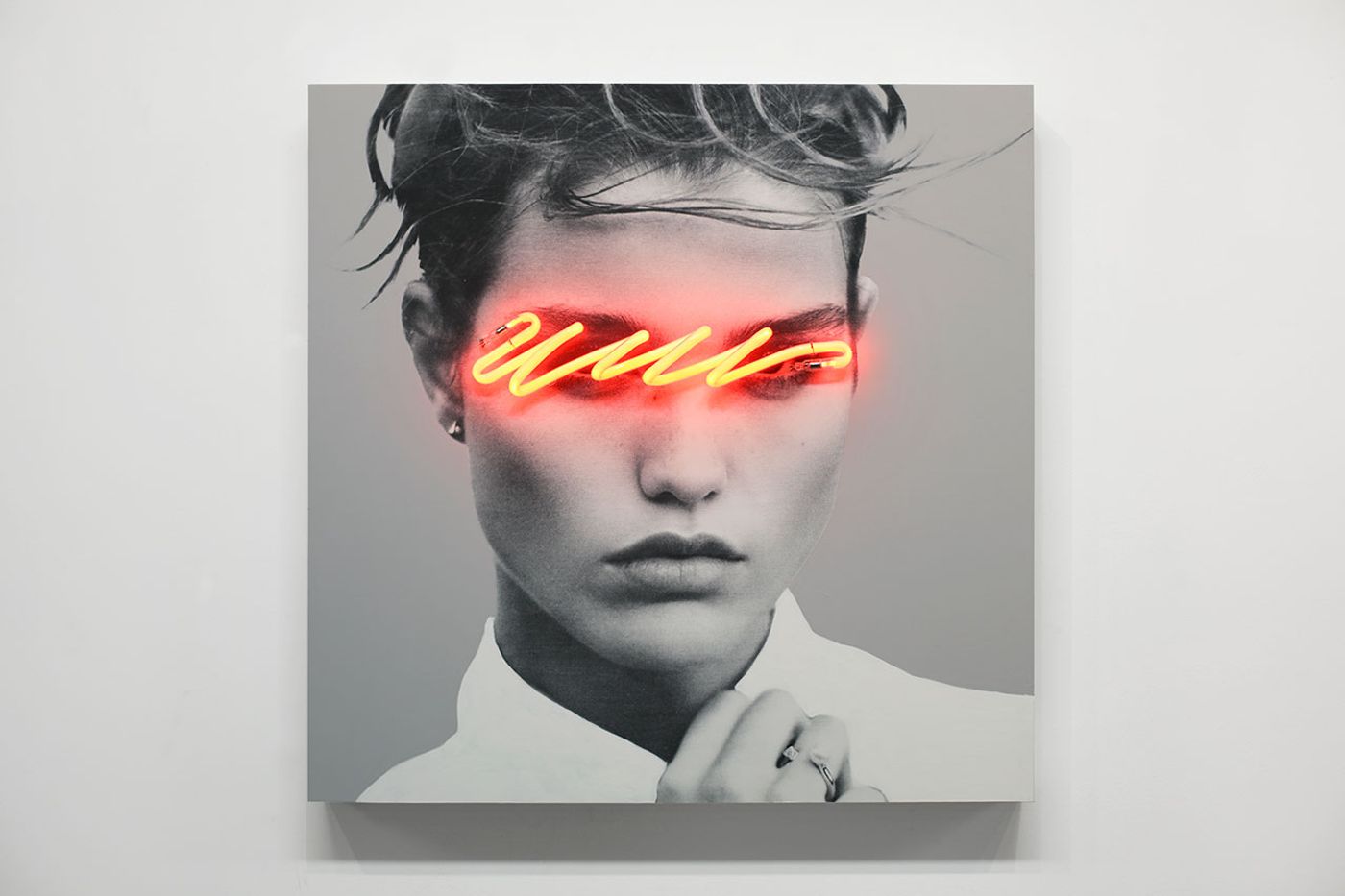
Javier Martin, False Freedom. Photo © Javier Martin.

Javier Martin, Purple Rain. Photo © Javier Martin.
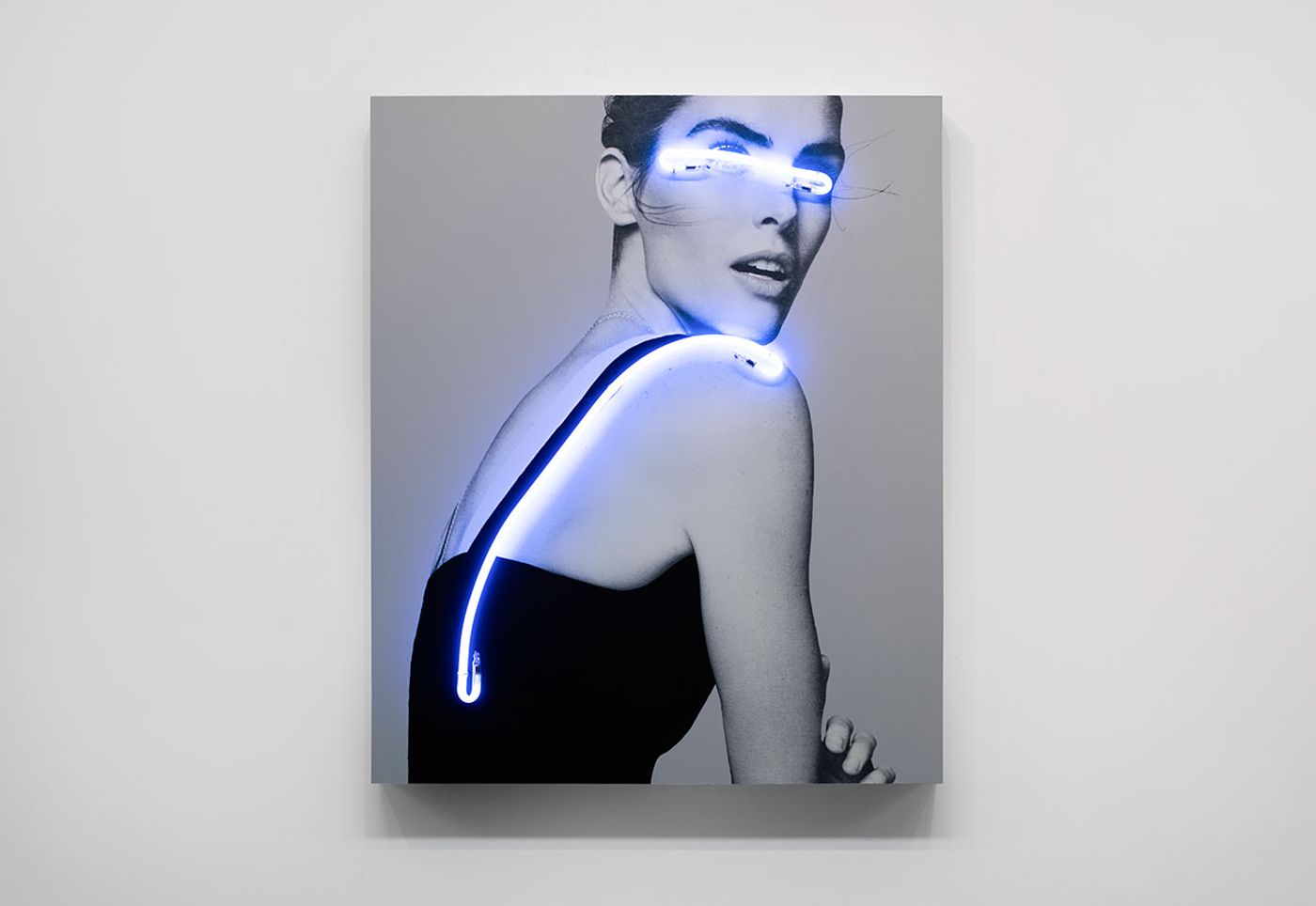
Javier Martin, Blue Soul. Photo © Javier Martin.
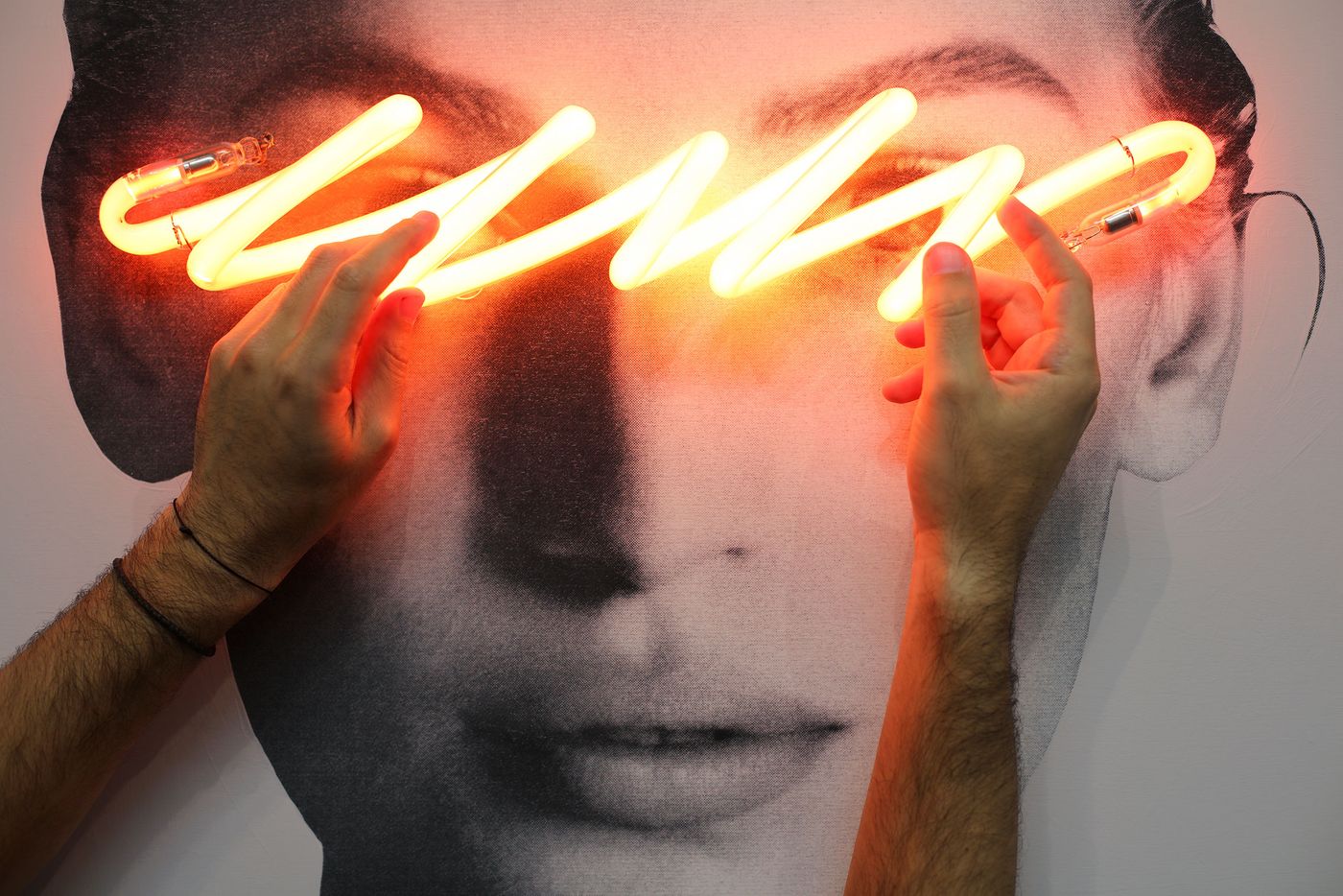
Javier Martin, La Amante Del Sol (detail). Photo © Javier Martin.
In the 20th century, the platonic concept of beauty as something that reflects the intrinsic, true nature of things was sidelined by the fashion, cosmetics and advertising industries based on outwards appearance and sexual attractiveness. Martin attempts to deconstruct this superficial perception of beauty by appropriating the very images that promote it. Inspired by the advertising campaigns of beautiful women one encounters on city streets, and in particular the juxtaposition between their stylized perfection and the surrounding urban grittiness, he reproduces them only to degrade their perceived perfection and question their inherent worth.

Javier Martin, Sensitivity. Photo © Javier Martin.

Javier Martin, The Lover. Exhibition view from Valli Art Gallery. Photo © Javier Martin.
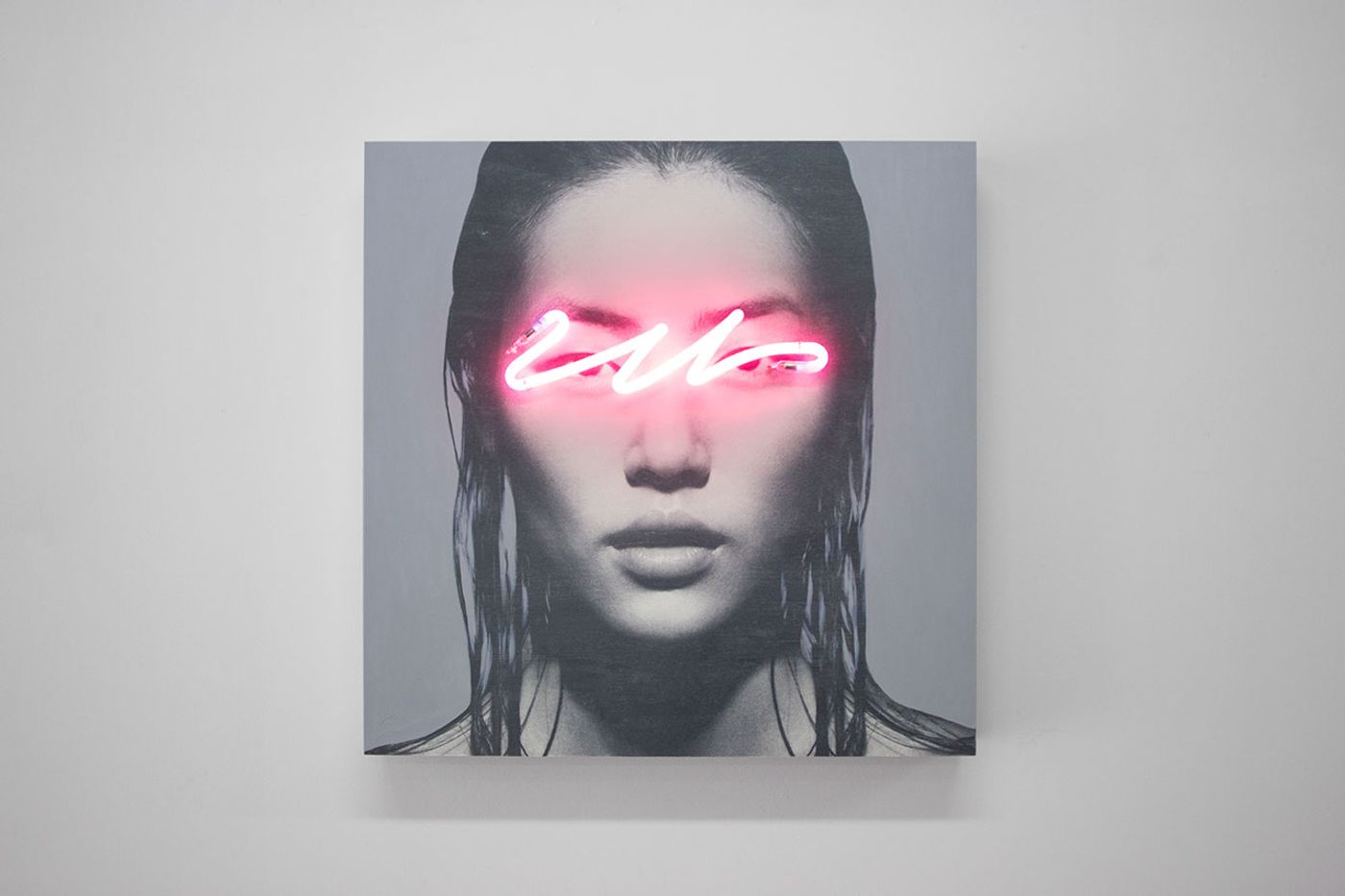
Javier Martin, The Secret Love. Photo © Javier Martin.
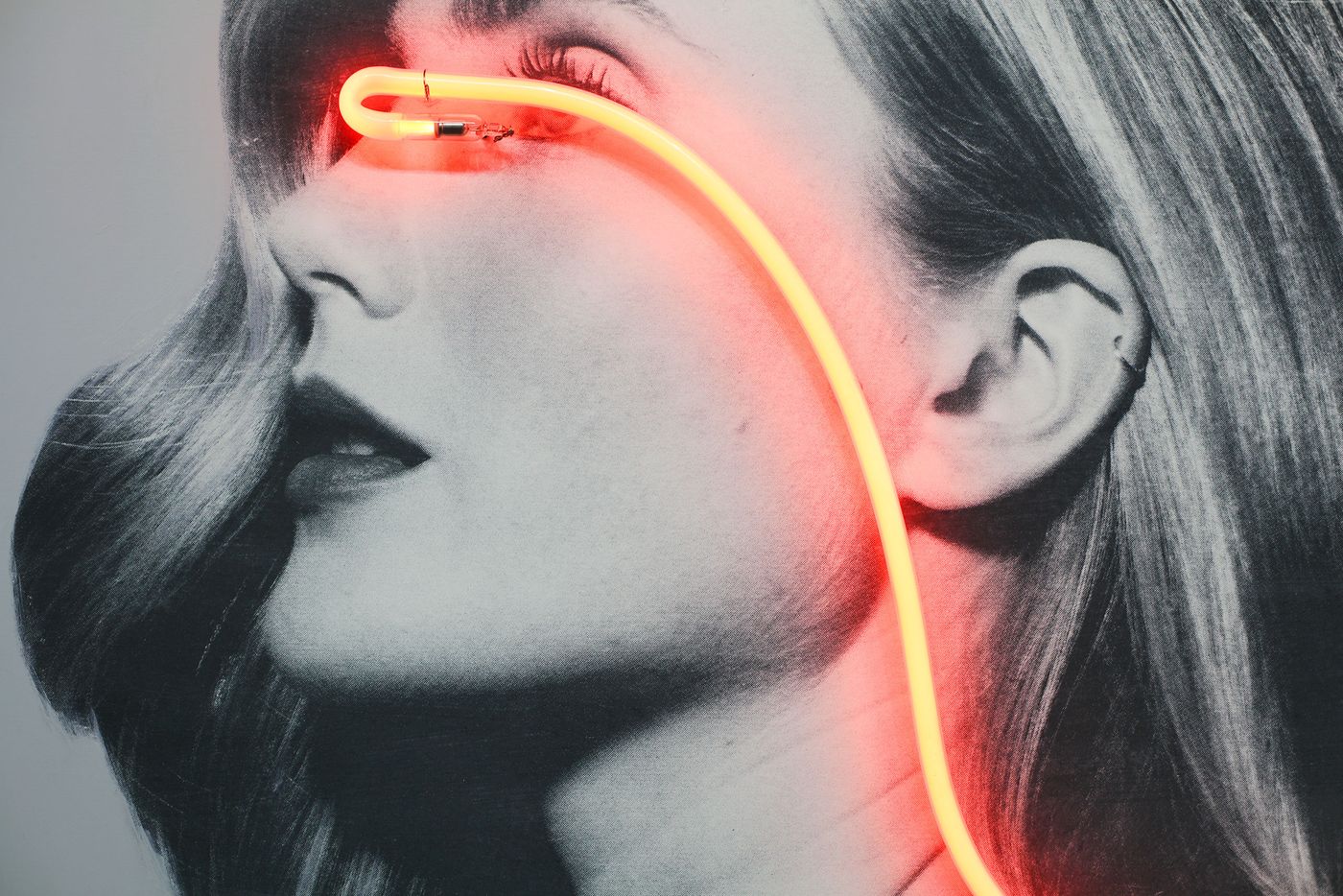
Javier Martin, The Vision (detail). Photo © Javier Martin.
Although Martín’s process varies as he is constantly experimenting, a common technique for Blindness Light is to print the selected photograph in black and white on paper and adhere it to a wooden palette, or alternatively print it directly onto the wooden surface, and then paint over it with oil or acrylic paint to create imperfections and block out the background. Lastly, the neon light is installed, its movement and color depending on the energy of the subject, always concealing the eyes for they represent, as the artist explains, “the social blindness caused by consumption and technology”.
The resulting contrast between the abrasive, somber flatness of the painted-over photograph and the smooth, electrifying three-dimensionality of the neon tube deprives the viewers of the numbing certainty of superficial beauty and invites them to redefine what they perceive as beautiful, or indeed genuine. Furthermore, by obstructing the eyes, the refection of human emotion, the viewer has to emotionally configure what he sees all by himself and in the process, Martín hopes, “question themselves and the world that we live in.”
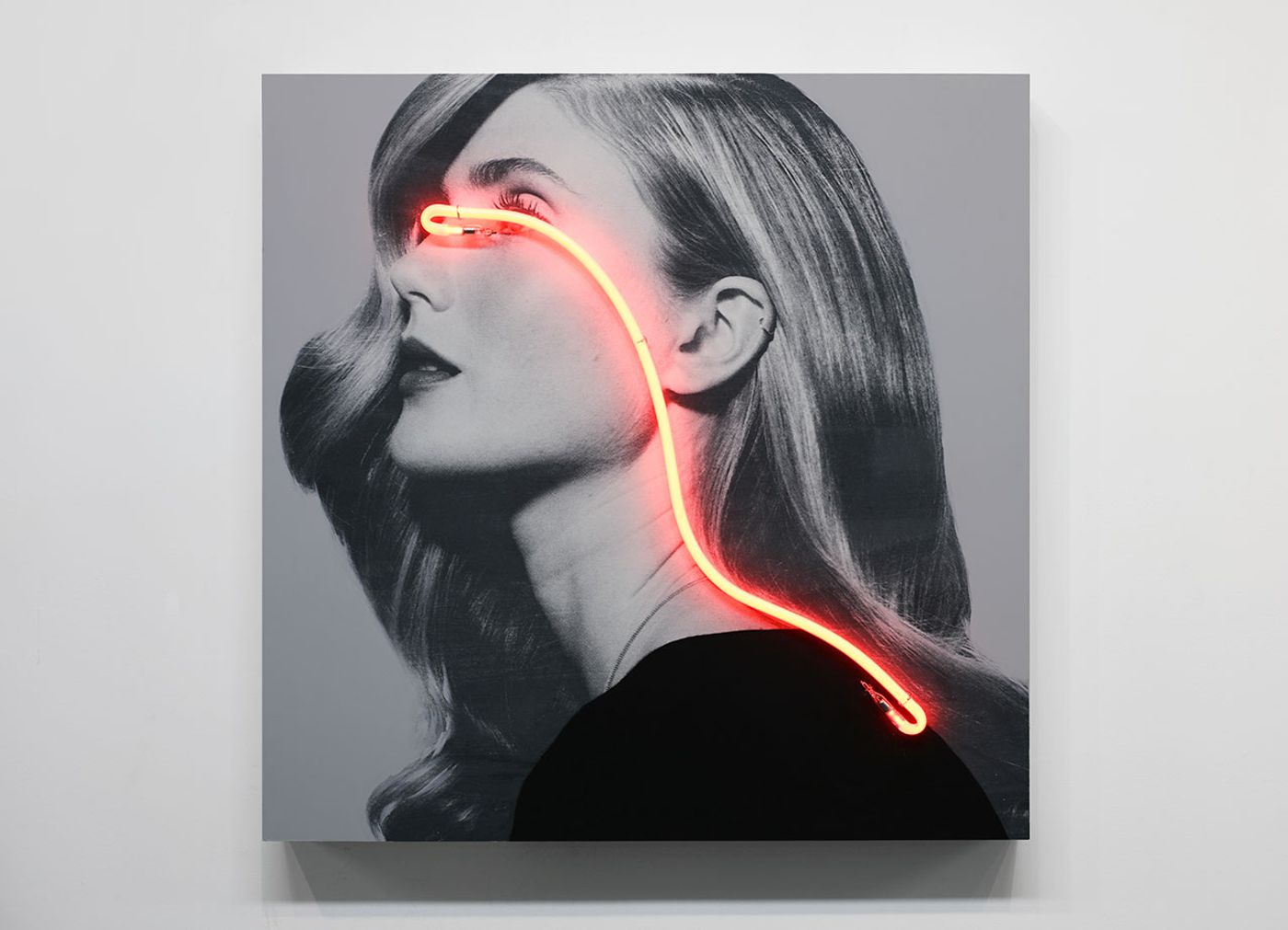
Javier Martin, The Vision. Photo © Javier Martin.

Javier Martin, La Tempestad. Photo © Javier Martin.
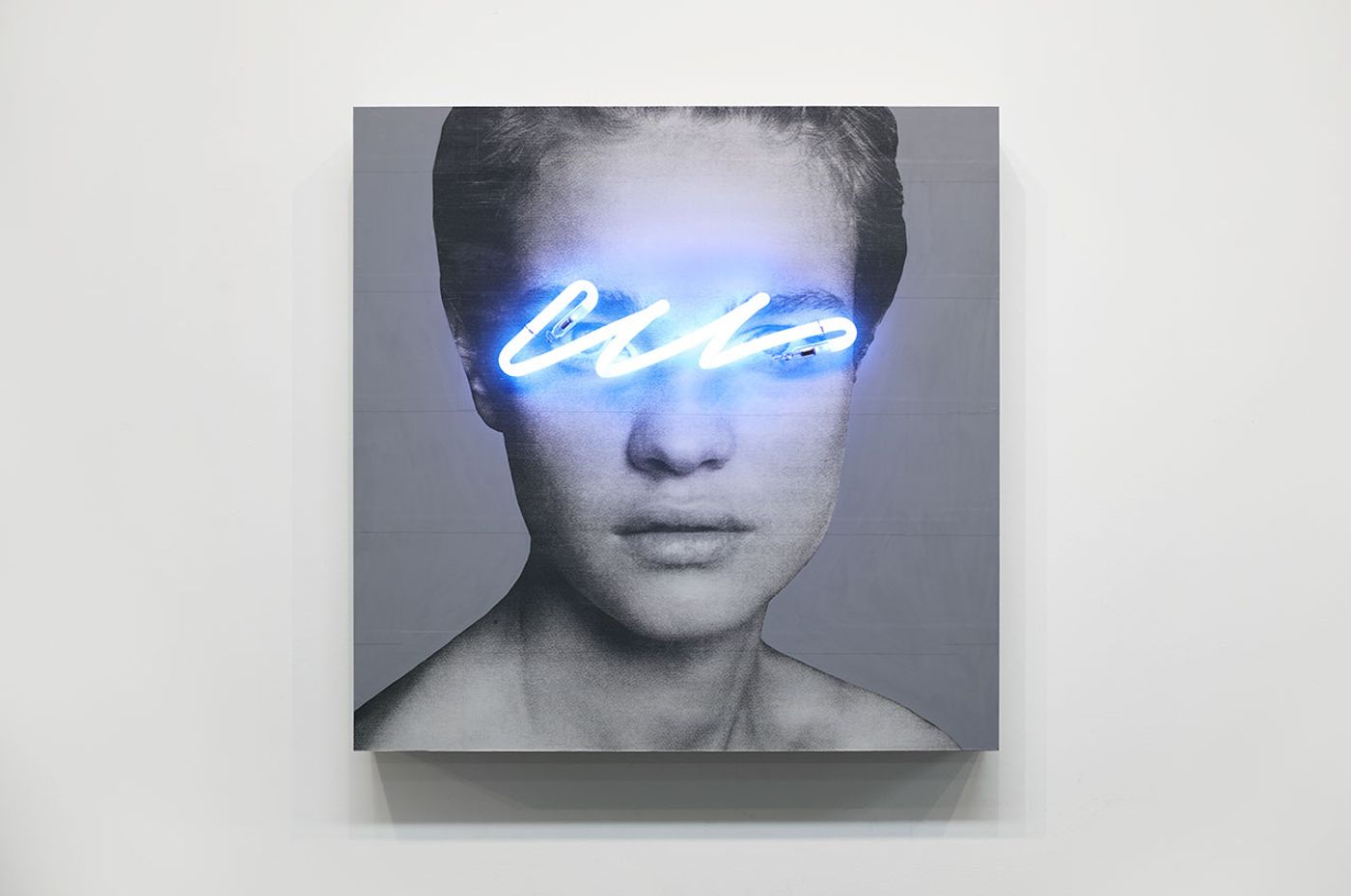
Javier Martin, Skin Words. Photo © Javier Martin.

Photo © Javier Martin.

Exhibition view from Valli Art Gallery. Photo © Javier Martin.